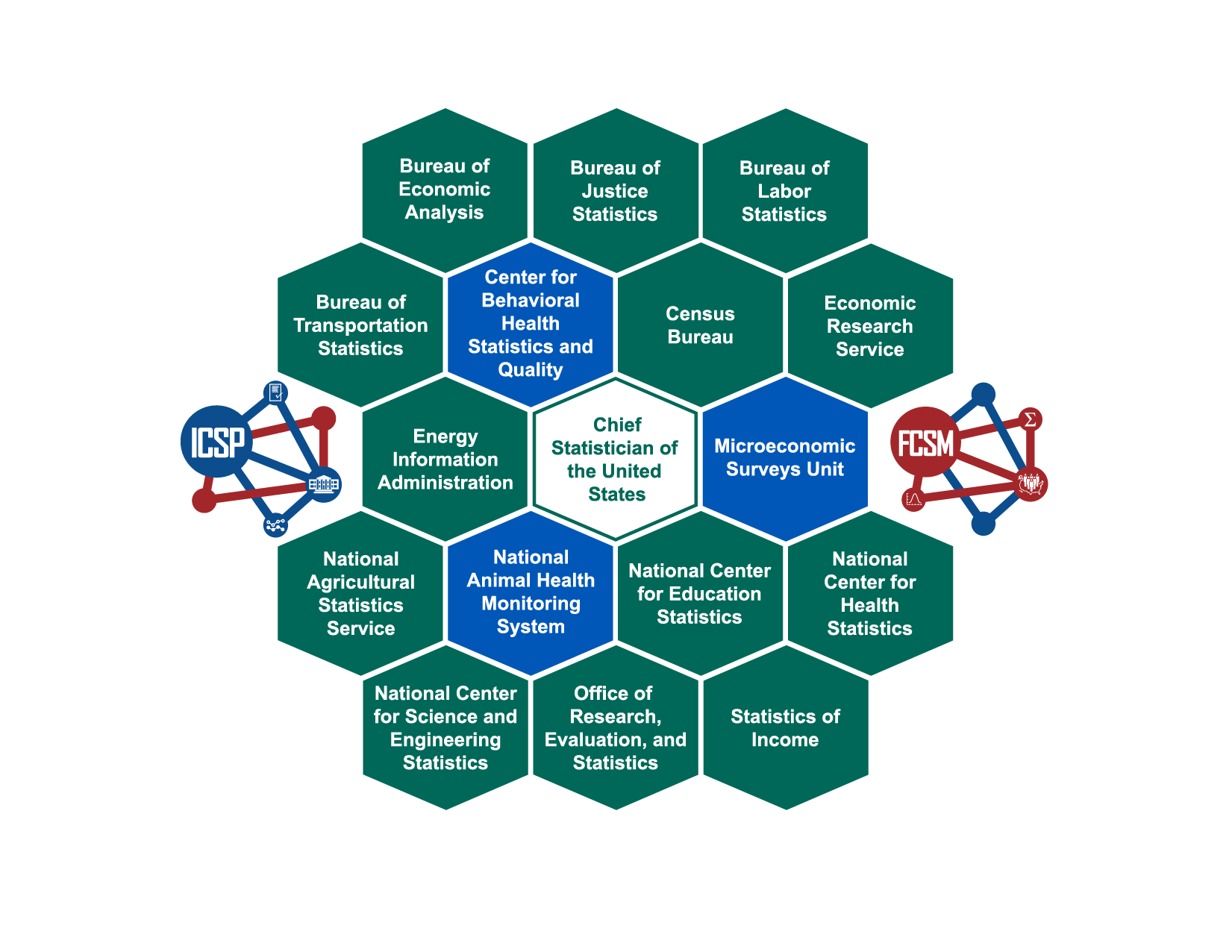Key points
- The U.S. federal statistical system coordinates the development and sharing of official federal statistics.
- The 13 principal statistical agencies and 3 statistical units provide credible, accurate, timely information to help guide public policy decisions.
- Federal statistical agencies must maintain independence and confidentiality to ensure the integrity and credibility of federal statistics.
Overview
The U.S. Federal Statistical System is composed of 13 federal statistical agencies and 3 recognized statistical units. Federal statistical agencies primarily work to collect, compile, process, or analyze information for statistical purposes1. Each agency produces a substantial portion of official federal statistics.
The Office of Information and Regulatory Affairs (OIRA) coordinates the system's activities to ensure they are effective. OIRA also ensures the integrity, objectivity, and confidentiality of information collected for statistical purposes. OIRA is part of the Office of Management and Budget (OMB).

The National Center for Health Statistics is the federal statistical agency responsible for the collection and dissemination of the nation's vital and health statistics. The NCHS Director also serves as the Statistical Official of the U.S. Department of Health and Human Services (HHS) to fulfill requirements of the Evidence-Based Policymaking Act.
Note
Several groups help coordinate and advise the Federal Statistical System, including—
● The Interagency Council on Statistical Policy
● The Federal Committee on Statistical Methodology
● The Committee on National Statistics
Federal statistical standards
Statistical agencies must adhere to a common set of standards to—
- Safeguard the integrity of their activities
- Develop and maintain public trust in the quality and credibility of the data
These include standards established by law and directives issued by OMB. Directives from OMB establish core responsibilities that NCHS follows in all data collection and publication decisions. NCHS also adheres to the standards outlined in the Federal Committee on Statistical Methodology's Framework on Data Quality.
Key laws and policy directives
- Evidence-Based Policymaking Act (Evidence Act)
- The Confidential Information Protection and Statistical Efficiency Act (CIPSEA)
- OMB Directive 1: Fundamental Responsibilities of Federal Statistical Agencies and Recognized Statistical Units
- OMB Directive 2: Standards and Guidelines for Statistical Surveys
- OMB Directive 4: Release and Dissemination of Statistical Products Produced by Federal Statistical Agencies
Policy directives in practice
NCHS must avoid even the appearance that people and groups outside our center could manipulate or influence how we collect, process, edit, compile, store, analyze, and share our data. This includes any influence by government officials.
NCHS has the authority to decide independently when and how we release our statistical products. HHS and Centers for Disease Control and Prevention (CDC) leaders do not influence when we release these products.
NCHS releases public-use data files as soon as they are ready to be shared. We provide extensive information about our data collection methods and any known or potential data limitations or sources of error. NCHS ensures all users, including HHS and CDC, have fair and equal access to our data and products. We also maintain safeguards to protect data integrity and confidentiality.
As a statistical agency, NCHS does not make policy recommendations in reports or publications. Our products must be free from any perceived or actual partisan input or influence. Instead, we provide high-quality data to guide others who develop health programs and policies.
